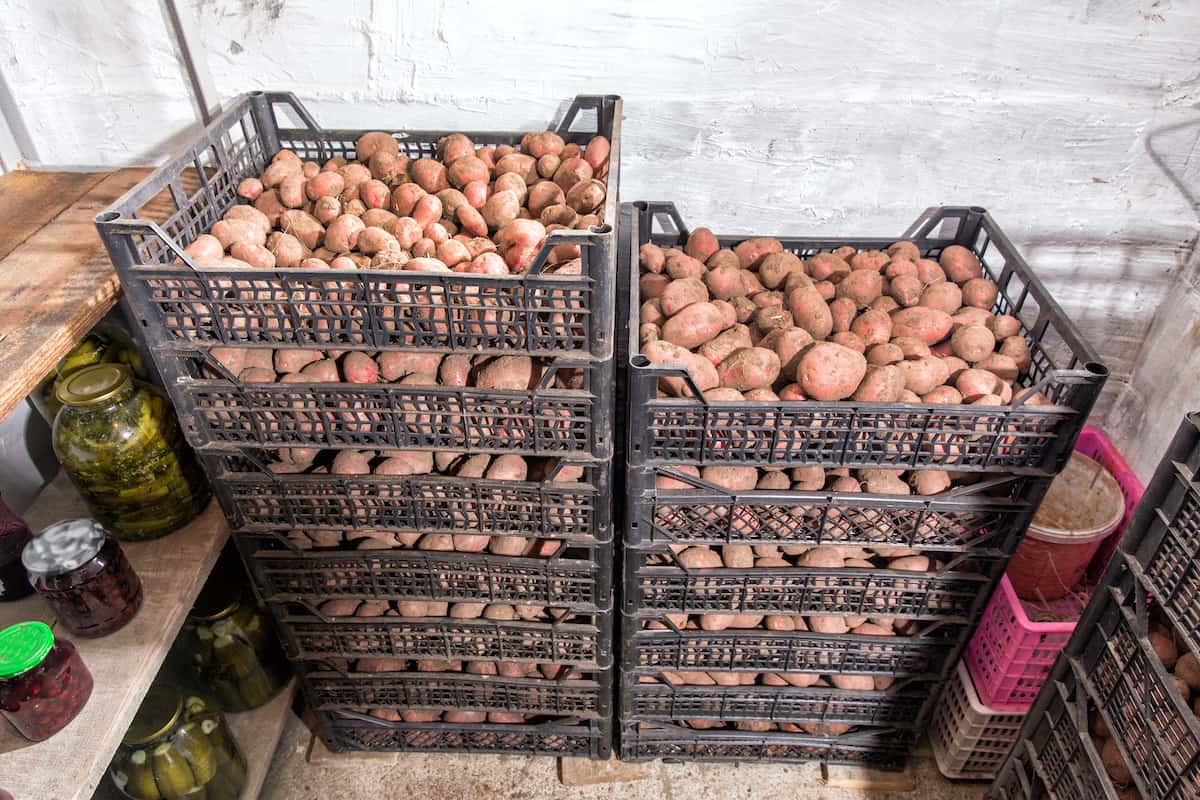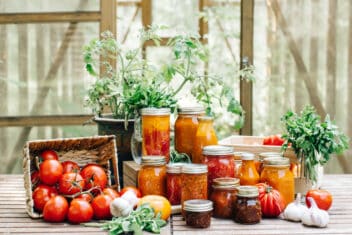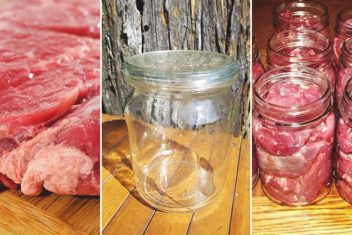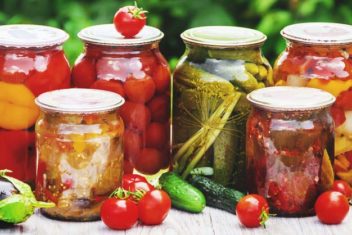It’s never too early to start thinking about next year’s garden, is it?
If you’re like many people who grow a vegetable garden – myself included – you are probably curious about how you can grow and store enough food to get you through an entire year.
Your first step as a gardener should be selecting vegetable crops that will last for the long haul – ideally, those that will hold up well without additional processing. Many vegetables, like leafy greens, don’t store well and therefore aren’t good options for long term storage.
There are others, though, like squash and potatoes, that holds up well throughout the winter months, even if you don’t have time to freeze, can, or dehydrate them. Potatoes are incredibly versatile and are a great source of nutrients.
Not only that, but potatoes are remarkably easy to grow, making them a staple in every backyard garden.
Luckily, there are plenty of ways you can store potatoes to keep them fresh. Here are some tips.
How to Store Potatoes So They Don’t Go Bad Fast
1. Inspect for Damages

Your first step in storing potatoes for the winter ahead should be to inspect them for any damages. Potatoes that have already begun to sprout won’t be good candidates for long term storage. Instead, use those potatoes as seed potatoes – you can plop them in some dirt and start a container garden of potatoes indoors now if you choose.
Otherwise, eat them up right away. They don’t have much time left before they will start to spoil.
Of course, you’ll want to watch out for any bruises, rotten spots, or mold, too. Last year, many of my potatoes suffered from blight and rotted before they were even ready to be harvested. The ones that were salvageable had many bad spots. I didn’t want to throw these out, so I cut around the bad spots and canned the bits and pieces that were left.
That’s your best option if you find that your potatoes have spoiled prematurely before you can get them into long term storage. You can also freeze the pieces, which I’ll discuss more later.
2. Keep Them in a Cool, Dark Place
The best place to store potatoes is in a cool, dry area of the kitchen (or root cellar or basement). You could even store potatoes in a garage, as long as it’s cool, dark, and dry.
Ideally, you should try to store potatoes at temperatures that range between 45 to 50°F. Any warmer or more humid, and your potatoes will sprout and begin to go bad more quickly.
To help keep your tubers dark, dry, and cool, you may want to consider storing potatoes in sawdust. The sawdust will help insulate the potatoes from outside temperatures while also soaking up excess moisture. You could also use dirt or peat moss to produce the same effect.
3. Consider Storing Potatoes in the Ground
If you live in an area that does not experience a hard winter freeze, you may be able to just leave your potatoes in the ground and harvest them as needed. Just mind the soil temperature and moisture levels – the temperature isn’t nearly as big of a concern as too much water is.
Covering your potatoes with a cold frame or polytunnel can help keep the water off and will allow you to store potatoes indefinitely, even if you don’t have a root cellar.
4. Avoid Using Plastic
Avoid using plastic at all costs. Lots of people put their potatoes in the root cellar after wrapping them in plastic bags. Though well-intended, this often has detrimental effects.
Whether you’re carrying potatoes home from the grocery store or you’re plucking them right from your garden, it’s not a good idea to store them in plastic. Plastic bags and plastic containers both trap moisture. This creates a damp environment in which your potatoes will spoil.
Let those spuds breathe! Get them out of the plastic as soon as possible.
5. Storing Potatoes in the Fridge
Although it makes sense to store other vegetables, like leafy greens and cucumbers in the refrigerator, you really shouldn’t get into the habit of storing potatoes in your fridge.
Not only does it not prolong the shelf life of your spuds, but the cool temperatures can turn the starches of your potato into sugars, hastening their spoilage. It may give them an off flavor, too.
6. Keep Them Away from Other Produce
Regardless of whether you are buying potatoes at the store or using the ones you harvested from your garden, there are certain neighbors with which potatoes don’t exactly play nice.
You’ll want to keep potatoes away from fruits and vegetables like onions, apples, and bananas. All of these produce ethylene gas, which can cause nearby produce to ripen and spoil more quickly.
7. Store Potatoes in a Root Cellar
Storing potatoes in a root cellar is one of the best ways I’ve found to store potatoes. We don’t have a root cellar, but we have a basement that we are able to keep dry throughout most of the winter. Although it’s not as ideal as a root cellar, it has worked well for us.
To store potatoes in a root cellar, put them in storage bins or potato storage bags. This should keep them in the right levels of temperature, humidity, and darkness to help them last.
Root cellars also work well if you are storing other types of produce, like apples.
8. Freeze Your Potatoes
If storing potatoes in a root cellar is not an option but you’d still like to preserve your harvest for later use, you may want to freeze them. They will become somewhat mushy when thawed but still work well in dishes that call for softer potatoes, like mashed potatoes or even stews.
To do this, blanch them first by dropping pieces of potato into boiling water. Let them boil for three minutes, then remove and dunk them into an ice bath. After they’ve cooled, you can package them up into freezer-safe bags. Blanching will help the potatoes reserve as much of their color and texture as possible.
9. Can Your Potatoes
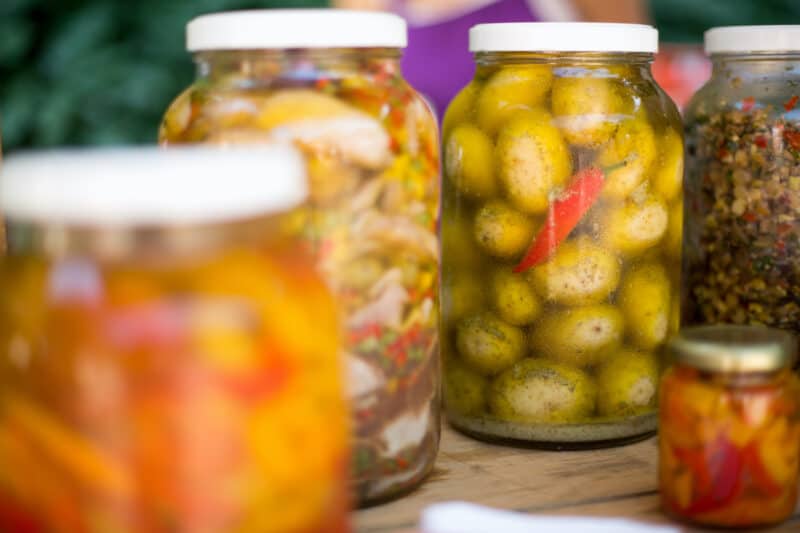
Potatoes can also be canned. However, it’s important that you follow a tried-and-true recipe like this one and only can potatoes using a pressure canner. Potatoes are low acid foods, so canning in a water bath canner is not only ill-advised but dangerous.
I’ve canned potatoes before and found that they are an odd texture that isn’t well-suited for all applications. The best way to cook canned potatoes is by frying them up or throwing them into a soup or stew. They don’t cook well for mashed potatoes or roasted potatoes.
10. Dehydrate Your Potatoes
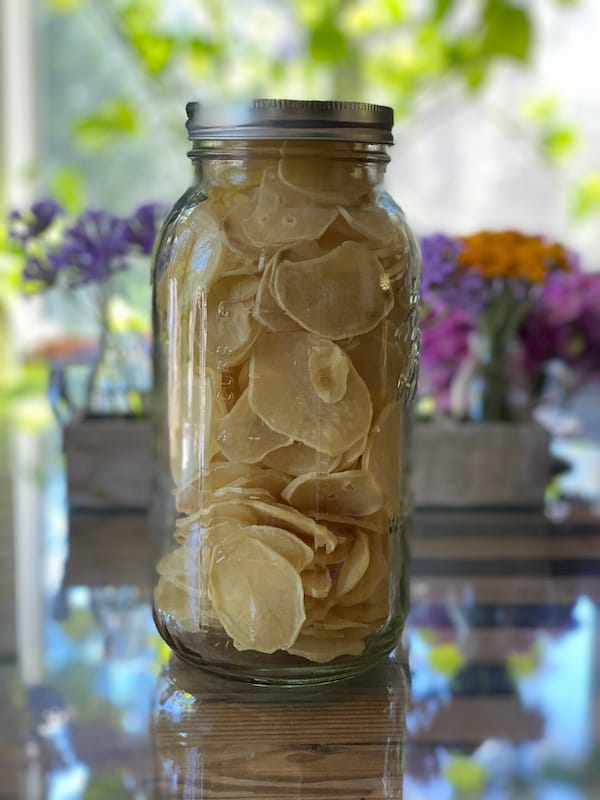
You can also dehydrate your potatoes. This can be done in a commercial-style dehydrator. You will want to cut them into thin slices and process them for at least six hours, or until they are dry and crunchy. They can then be stored in an airtight container, where they will last indefinitely.
How to Store Potatoes for Winter by Curing
Any of the tips I told you about above will work great for storing potatoes – regardless of whether they are homegrown or store-bought.
However, if you plan on storing a homegrown harvest, you will need to make one special consideration. You need to cure your potatoes before you store them. This process has usually already occurred with store-bought potatoes.
After you have harvested your potatoes, let them remain outside in the sun for at least an hour to dry. Potatoes don’t require quite as much curing time as do other types of produce, like squash, but they need to be cured. This will help them develop the resiliency necessary for long term storage.
1. Tips for Curing Potatoes
Avoid washing your potatoes. This is not necessary, as the dirt will actually extend the shelf life of your tubers in storage. Just let them dry if they were damp at all when you removed them from the ground. Washing is not only not necessary, but also ill-advised. It can cause dampness on your tubers that lead to mold.
If you’re really concerned about the dirt, just use a soft brush to remove the clumps of dirt. Don’t brush too hard – it will pose the risk of you damaging your potatoes.
This is a great opportunity to examine your potatoes and make sure they don’t show any signs of damage. If there are holes or tears in the skin, it doesn’t mean you need to discard them. However, you may want to stash these potatoes at the top of the storage pile and use them up first.
Rest assured, some damages will actually heal as your potatoes sit in storage. However, those with lots of bruises and blemishes may not heal well. Just eat them as soon as possible.
Another word of caution – if you find potatoes that have green skin, they’ve probably been allowed to cure for too long in the sun. They won’t be edible anymore and should be discarded. Too much sunlight causes potatoes to produce solanine, which is not only bitter but poisonous.
2. Cure Longer if Necessary
If you plan on storing potatoes for longer than a couple of weeks (seven months or more), let them sit in storage for a couple of weeks. Make sure they are out of the light when you do this, as the sunlight can cause the potatoes to produce solanine.
Let them cure in a dark place where temperatures are around 55°F. A bit more moisture is okay during this second curing stage, but you will want to lay the potatoes out so they dry. This will allow the air to circulate.
Curing not only helps your potato dry out, but it also helps them cure their wounds. Once your potatoes have cured, you can move them to a dark storage area. Make sure the area is cool, as I mentioned because temperatures that are too high can cause your potatoes to sprout eyes or shrivel.
How Do You Make Potatoes Last Longer?
The best way I have found when storing potatoes is to use a potato storage bin. We have large wooden bins with slatted sides. They not only allow air to circulate but also can be stacked to save space. The nicest looking potatoes go on the bottom, while those that are questionable go toward the top so they can be eaten first.
Check your potatoes regularly and make sure they aren’t shriveling, sprouting eyes, or molding. You will want to use those up first, and check your conditions to make sure they aren’t causing your potatoes to spoil prematurely.
How Long Can You Store Potatoes?
When stored properly, your potatoes should last several months. In fact, when following these tips, I have found that my tubers usually last until the new potatoes are ready to go into the ground the following spring – sometimes, even longer.
Usually, though, we’ve eaten them all by then – but that’s only because we really like potatoes!
